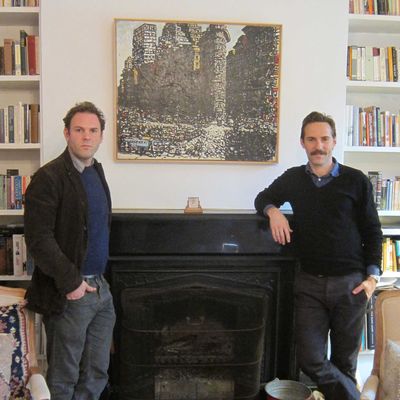
ItÔÇÖs not easy nabbing the Nivola Brothers. Alessandro, who is starring in The Elephant Man on Broadway with Bradley Cooper and Patricia Clarkson, is also busy filming the second season of the HBO comedy series Doll & Em with his wife, the actress Emily Mortimer. He also has two movies opening later this month: Selma and A Most Violent Year. His artist brother, Adrian, is preparing for a group show titled ÔÇ£Winter SalonÔÇØ at the Drawing Room, open December 13 through February 28, 2015. But they generously made time to meet at AlessandroÔÇÖs home in Brooklyn, where they described growing up in the fascinating world of their grandparents ÔÇö artists Costantino and Ruth Nivola ÔÇö and getting to know their grandparentsÔÇÖ legendary friends, which included artist Saul Steinberg and architect Le Corbusier. We sat down in AlessandroÔÇÖs cozy living room, where Adrian, on the left, and Alessandro, on the right, started by talking about their grandfatherÔÇÖs work, the painting above the couch being one of Costantino NivolaÔÇÖs.
What is this painting?
Adrian: This particular painting (made here in New York in ÔÇÿ48) shows my grandfatherÔÇÖs effort (relatively early in his career) to assimilate what he was learning through his friendship with Le Corbusier about modern construction and cubism. It is perhaps slightly imitative of Corbusier, but I also see in it the seeds of his own personal vocabulary of forms inspired by the ancient Sardinian sculpture of his homeland.
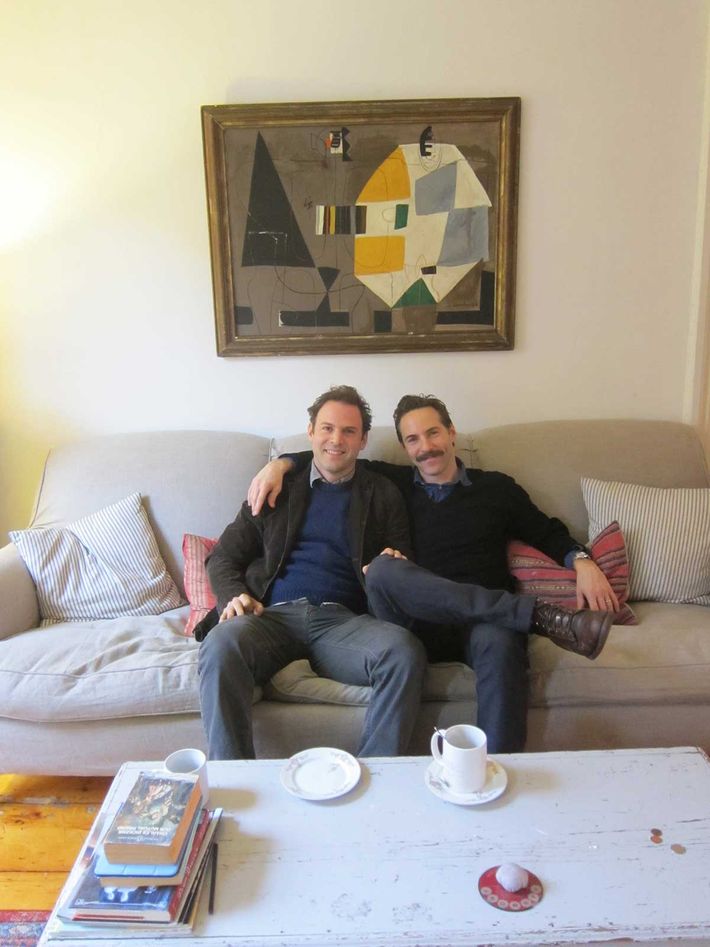
Saul Steinberg made you gifts? How did that begin?
Alessandro: Well, I didnÔÇÖt really, at the time, have any understanding of what toys meant to him in an artistic way, but all I knew was that we had the same birthday, June 28 ÔÇö at least that is what he told me. This kind of ritual developed where I would give him toys, and he would give me art [breaks into laughter] and of course at the time I had no idea it was such a good exchange. In fact, it probably pissed me off, initially.
What kind of toys would you give him?
Alessandro: I think a couple of years I gave him matchbox cars, and then one year I gave him this hat that was a childÔÇÖs construction-worker hat; it was an orange hat with a big red light on the top that you could turn on, and this red light would spin around.
Adrian: I remember one that was a headband with two springs attached and eyeballs at the top, and he would wear it and come over to the house, and sit down at the table and sort of hold court with this thing on his head.
So was the deal that you had to give him some toys before heÔÇÖd give you your present?
Alessandro: IÔÇÖm trying to remember how it worked? It wasnÔÇÖt like we would meet in a parking lot and there would be a suitcase of money [laughing], but he was right across the street, so I guess I would walk over there with my thing for him, and then ÔÇö I rarely remember him in our house. I know he came often, but I donÔÇÖt have any memory of that. I always remember going to his house. I get the feeling that he would sometimes make things for me on the spot. I have a vague memory of showing up with my thing for him, and then heÔÇÖd take me into the back where his studio was and, you know, chip something away for me and hand it over. I think he enjoyed the ritual of it, definitely, and he was amused by it, but it was kind of like things that would just pop into his head at the spur of the moment.┬á My nickname was Tuna when I was a little kid. He made me a fake canned Tuna, and then on it he wrote ÔÇ£Tuna.ÔÇØ
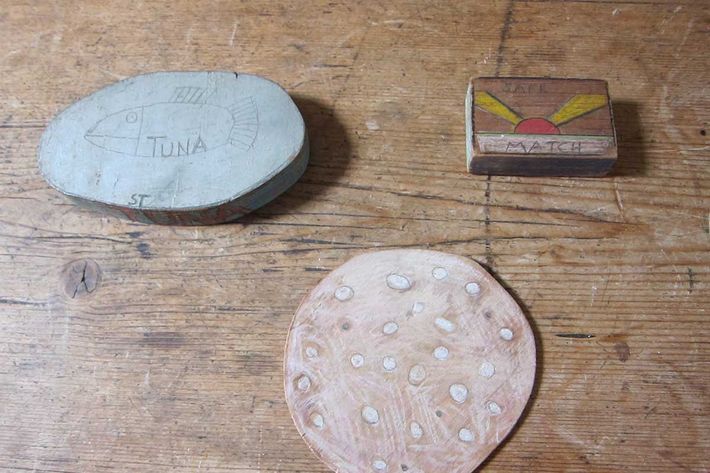
So you didnÔÇÖt always go together?
Alessandro: These were memories from when I was pretty young. Adrian and I are five years apart. At that time, he would have been a baby.
Were your relationships to Saul different?
Alessandro: AdrianÔÇÖs relationship with Saul, I think, developed more when he was of an age to both appreciate it and to be intimidated by him ÔÇö whereas mine, I was just so young. I pretty much took it for granted, as I did with everything about the art at the house, and growing up there as a young child, and then in my teenage years, I was away in the summers, doing internships in theaters, and Adrian spent more of those years of his life becoming more and more obsessed about art and becoming an artist. So my feeling about it is that you got to know Saul more as an adult than I ever did.
For me, this environment was just something that I completely took for granted. Of course, looking back, I have a huge appreciation for it and what it meant. But at the time I didnÔÇÖt have any awareness that it was special.
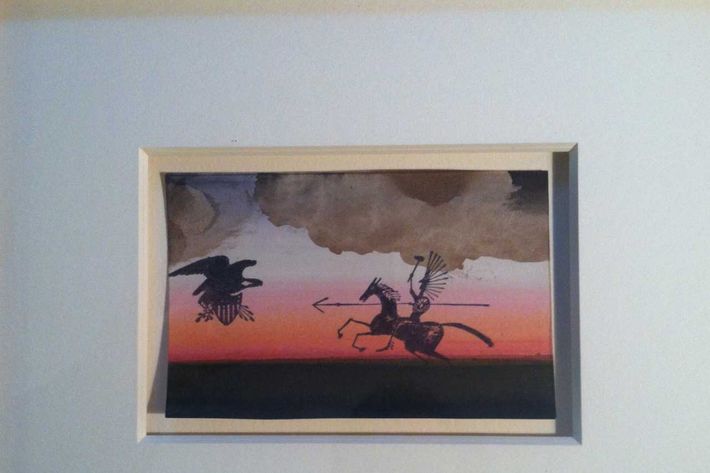
How many years did the gift-giving span, would you say?
Alessandro: About six years, maybe?
How many gifts in total do you think you have between you?
Adrian: Ten to 15.
Do you still exchange gifts? Like, IÔÇÖll take the tuna and you can get the clock?
Adrian: [Laughing] I think IÔÇÖve given you my clock in exchange for the tuna?
Alessandro: I think Mom has your clock.
Adrian: No, no.
Oh, so you each have a clock?
Alessandro: Yes, his is even smaller. [Both laughing.]
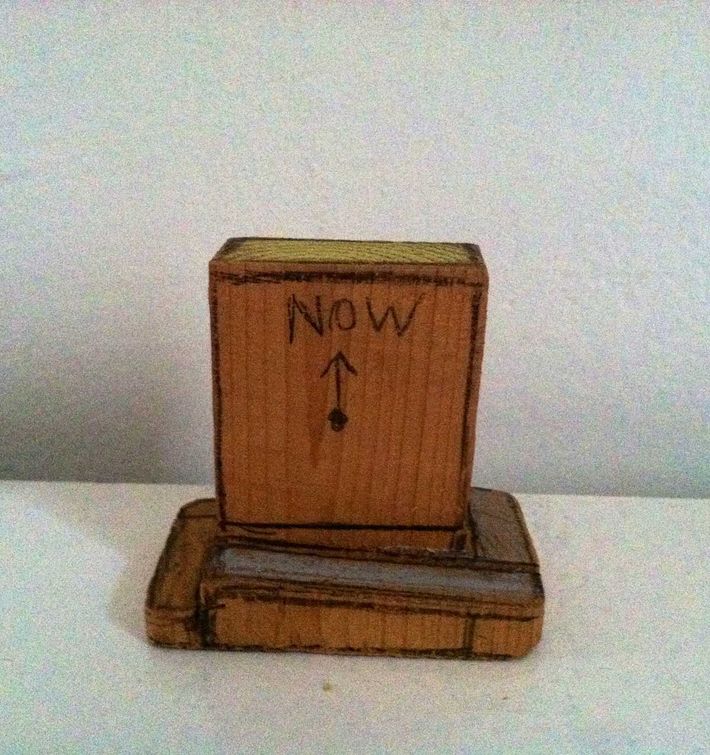
What kind of art do you collect? I see that you live with a lot of your grandfatherÔÇÖs art.
Alessandro: Mostly my grandfatherÔÇÖs art because itÔÇÖs highly affordable. It was all free! And then I have some of AdrianÔÇÖs things, and then some of SaulÔÇÖs things, and then apart from that nothing, except for photography. I have some photography. EmilyÔÇÖs brother-in-law was one of the great rock photographers, his name is Gered Mankowitz, and he did some of the seminal photographs of the Rolling Stones and Jimi Hendrix, and so I have one of his original prints of this Rolling Stones concert. And then there are some photographs of the husband of EmilyÔÇÖs best friend, who is a great photographer named Mischa Richter. Mischa Richter was a New Yorker cartoonist and was a contemporary of my grandfather, and then his grandson, who is my age, is also named Mischa Richter as well, and he is a photographer.
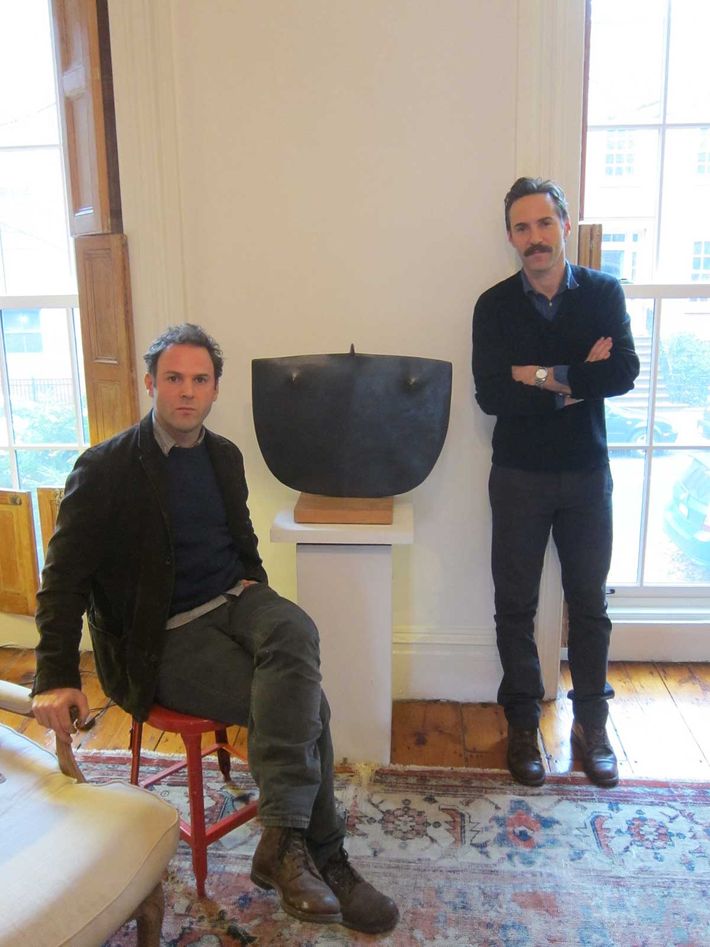
Adrian, how do you look back at some of your visits to SaulÔÇÖs?
Adrian: I think I was nervous to be with Saul because he was formidable. And he could be austere at times, even though he had this other side of being very playful with us, too. But there was a sense that you had to watch what you said around him. I remember this one time; IÔÇÖm not sure if I told you this before, but I was sitting in his living room, and when I had seen a drawing he had made on the wall and I told him that I loved the drawing, he said, ÔÇ£Good for you.ÔÇØ
He taught a lot of tough lessons, in a way?
Alessandro: He had no interest in social graces. He was one of those people who was very comfortable in his own skin and didnÔÇÖt feel the need to put on a show for anybody. So if he happened to be in a mood where he was feeling entertaining or mischievous, then thatÔÇÖs what you would get; if he happened to be in a mood where he just didnÔÇÖt give a shit, then thatÔÇÖs what youÔÇÖd get.
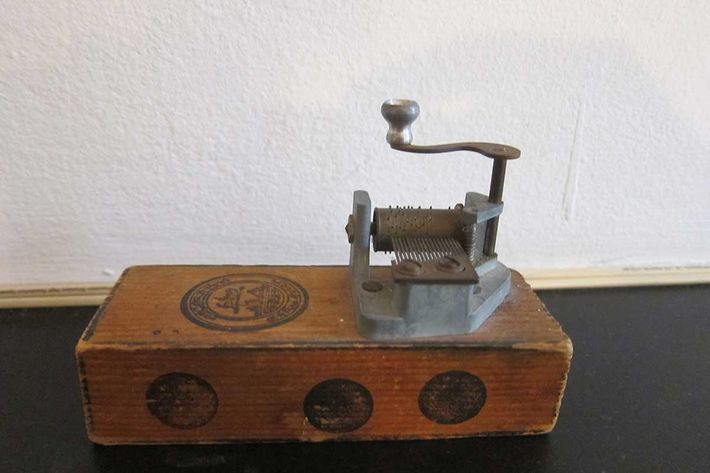
Did he have to invite you? Or you could wander over?
Alessandro: I remember just knocking on his door.
Adrian: I think that he was so, so much more intelligent than anybody else around him that he would often get bored in social situations, and at times he would bat people around like a cat with mice.
He sounds intimidating!
Adrian: Well, itÔÇÖs a very hard thing to describe those qualities without also mentioning the avuncular, more affectionate side he had towards us.
Alessandro: You never felt that he was pointedly trying to be cruel to you.
Adrian: I remember another episode where my grandmother went over to his house with this ugly plastic devil knowing that he would hate it. As a joke, she said to him when she gave him the present: ÔÇ£Saul, I give you a devil because you are a devil.ÔÇØ He put it up on his shelf and it stayed there.

Is there an artist beyond your family whom youÔÇÖre particularly in love with?
Alessandro: In my case, IÔÇÖm most drawn to the period of art in which my grandfather was working. I never really thought about this until now, but if I were to be able to put on my walls just any piece of art that I wanted ÔÇö my home would look like the Venice Guggenheim ÔÇö thatÔÇÖs just because that is what I grew up seeing all the time.
Where as Adrian has had such a more extensive art education than I ÔÇö he has passions for works of other eras. I mean, I have it, too, if I go and see a Rembrandt, a Bonnard, or any of the great paintings. But I feel that thereÔÇÖs something about this era that is both explosive and muscular and bold, but also kind of romantic and aesthetically beautiful, the combination feels familiar to me.
Adrian: So many  I went and saw the Goya show; I wouldnt mind having that enormous painting of Goyas Infante Don Luis. Have you seen that? Have you been to see the show in Boston? You have to go.
Alessandro: What is the Infante Don Luis?
Adrian: Oh, the Infante, he was the younger brother of I think Carlos [Charles] III, and he was a potential threat to the succession of the crown. In order to eliminate that threat, he insisted that his brother marry a woman of lower noble rank so that their children would be taken out of consideration of the future throne of Spain. And this Infante was somebody who loved people from all walks of life; he didnÔÇÖt want to live just surrounded by the nobility, and he married a woman who was not of the same rank as he. And then they had children and they had this sort of court like in exile. And so Goya was his court painter, and he painted an image of all of the characters in the court in a group portrait, and it has all of the nuanced psychologies of every member of that strange domestic life that they would have had together, and he placed her portrait right in the dead center of the image, which is one of the most crazy moves any painter could make because, I mean, itÔÇÖs daring to the point of crazy. I mean, itÔÇÖs dead center from where itÔÇÖs impossible to move your eye; your eye locks in there. But he put her head there, and it gives the effect of marginalizing the Infante. This woman has power of the destiny of the court. And you just get a sense of his love of all the characters of the court, and the life of this environment, but also their own sense of their uselessness, and that they have no future. He orchestrates that so beautifully in this complex composition, and as such a young man, and it blew me away. He took unbelievable risks.




